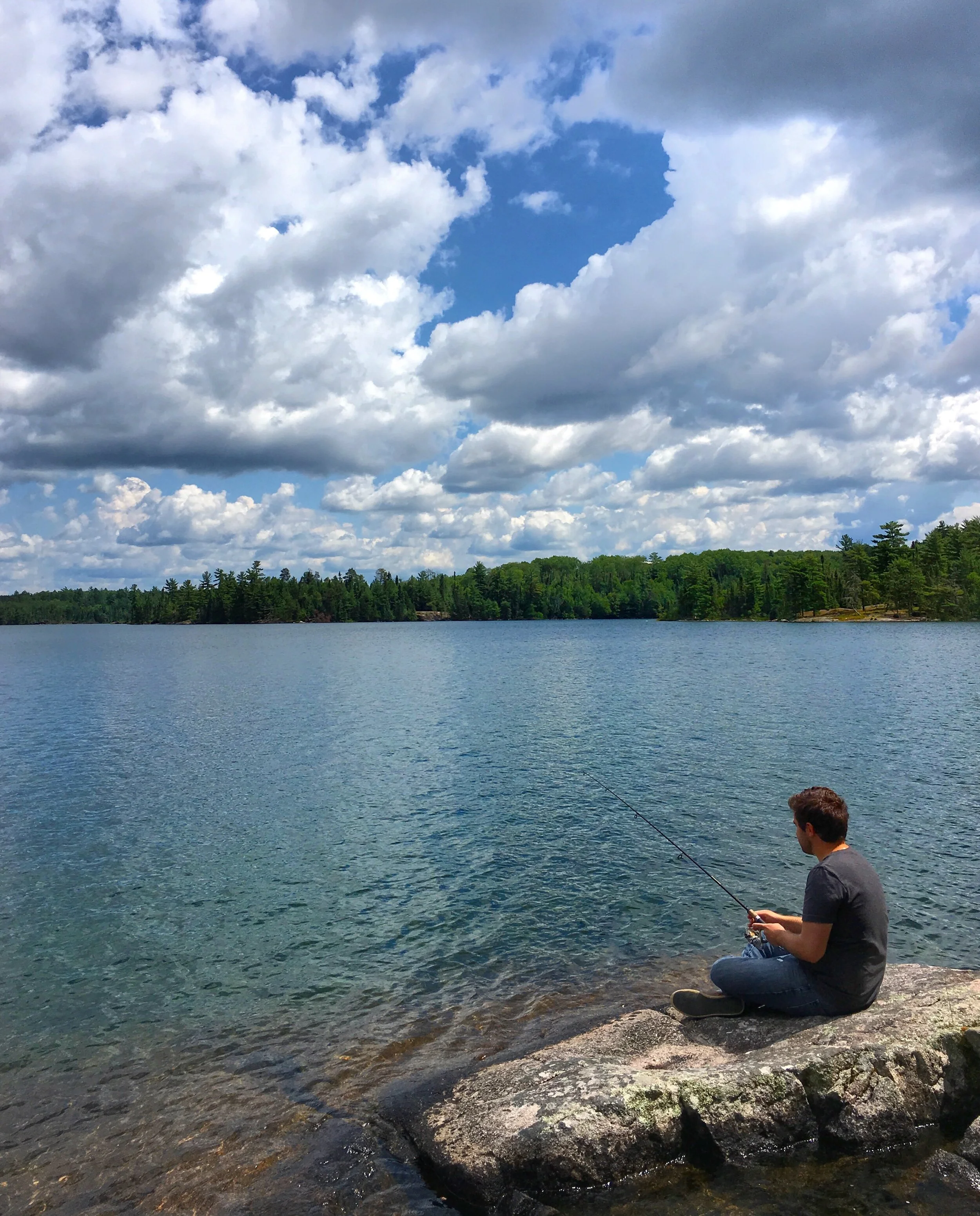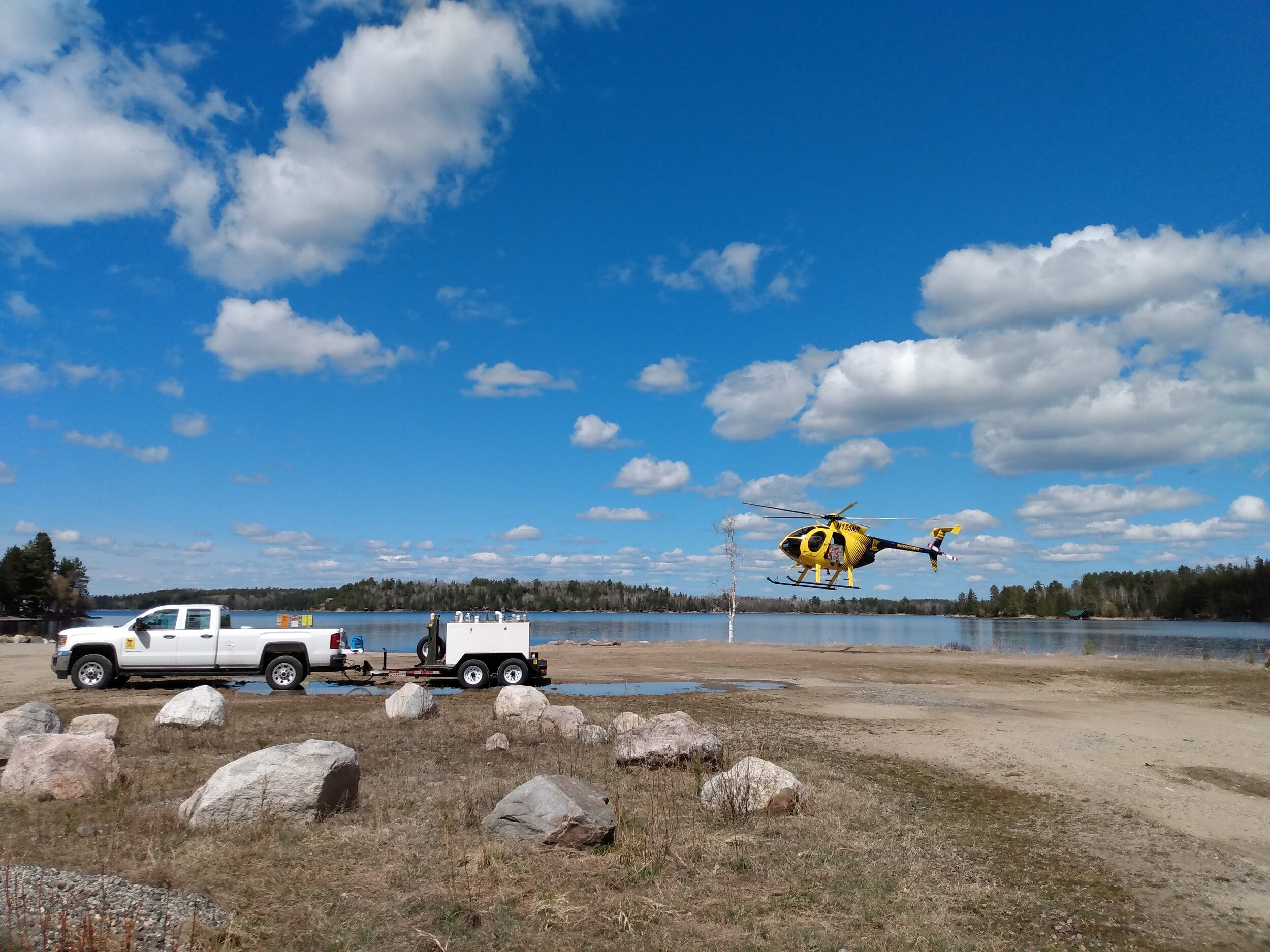State of the Park: Strengthening our Interior Lakes
Each of Voyageurs National Park’s 30 lakes has its own unique character, but have you gotten to know some of the unique characters that call these lakes home? One of Voyageurs’ 26 interior lakes (smaller lakes upstream of Rainy, Kabetogama, Namakan, or Sand Point lakes) will be getting a boost in their cold water-loving residents.
Lake Trout, National Park Service
Tucked just east of the Grassy Bay Cliffs, the Lake Trout of Little Trout Lake are working hard to keep their population going against pressures from the climate and their neighbors. Lake Trout depend on a band of cold, highly-oxygenated water called an oxythermal habitat layer. This layer naturally fluctuates throughout the year - widest in northern Minnesota’s long, cold winter months, and narrowing through spring and summer. Think about swimming in the lake and how deep you have to swim to hit the cold spot in June compared to August - this cold zone is where Lake Trout thrive.
With summer weather getting warmer and lasting longer, that oxythermal layer is at risk of becoming increasingly narrow, and even disappearing altogether. The park’s aquatic ecology team and others monitor this coldwater habitat to help fisheries managers understand current conditions and climate stress that may affect these populations. The good news is that predictive models indicate Little Trout Lake’s coldwater habitat is likely to persist longer than that of most lakes in Minnesota, indicating that habitat suitable for Lake Trout to establish a population will likely be present. This makes Little Trout Lake one of only three interior lakes in Voyageurs and about 100 lakes in Minnesota that support Lake Trout.
Fishing on Little Trout Lake, Jenna Lefebvre
Yet the native Lake Trout population has declined in Little Trout Lake, perhaps due to competition from other hungry predators such as Walleye and Smallmouth Bass. These species are adapted to warmer waters and have more room to roam and find food. Aquatic Ecologist Ryan Maki describes the lake as a two-story fishery - the cold, Lake Trout-filled zone below, and the warmer zone inhabited by other species above.
Fisheries Biologists and Resource Managers from the National Park Service and Department of Natural Resources are working together to monitor these Lake Trout and allow them to reestablish a self-sustaining population. Since recent surveys have shown that the native Lake Trout population in Little Trout Lake has declined and is likely no longer present, park and DNR staff are working to reestablish Lake Trout using a stock that the DNR has available in one of their fish hatcheries, with the hope of developing a strong, sustainable population.
In the late 2000s, a DNR study in Mukooda Lake found that the well-adapted, genetically unique native Lake Trout were maintaining a population on their own without stocked fish contributing to reproduction. By preserving water quality and preventing the introduction of invasive species, NPS and DNR staff hope a similarly hardy population will establish itself in Little Trout Lake. Teams will continue monitoring efforts and esign management strategies based on how the population continues to adapt to changing conditions.
As we continue to learn more about our coldwater fish friends, it is up to us to help maintain a healthy habitat for Lake Trout and all the critters and plants that call Voyageurs home. Jaime LeDuc, Aquatic Biological Science Technician at Voyageurs, reminds us that there are actions we can take that will keep Voyageurs’ water healthy. LeDuc says, “I think we can meet the needs of both humans and wildlife if our freshwater ecosystems are carefully managed and protected.”
Minnesota DNR staff use a helicopter to access Little Trout Lake
KEEPING OUR LAKES HEALTHY
Use environmentally friendly and biodegradable soaps and cleaning products when out in the park and at home.
Do not overfish. Remember to follow Minnesota State fishing laws and guidelines and Voyageurs National Park regulations on interior lakes.
Diligently clean any lake/boat/fishing gear and follow local regulations to prevent the spread of aquatic invasive species.
Reduce fossil fuel and electricity use to lessen carbon emissions into the atmosphere.
Reduce single-use plastics - microplastics very often end up in waterways.
Consider how water drains off your land and if any products like fertilizer or gasoline could be leaching into the groundwater.



